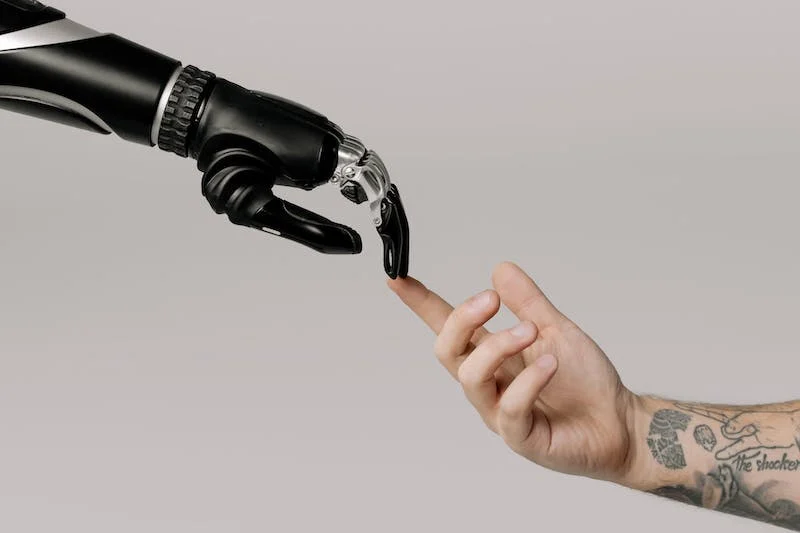Contents
- Smart Cities: How IoT at Scale Is Reengineering Urban Life
- Industry 4.0: IoT Leading a New Era of Intelligent Manufacturing
- Agriculture and Environmental Systems: Precision Ecosystems Powered by IoT
- Edge Computing: The Catalyst for Scalable IoT Ecosystems
- The Challenges of Scaling IoT: Security, Sustainability, and Data Integrity
- External and Internal Links
- 🌐 Conclusion: IoT at Scale Is Redefining the Digital Infrastructure of the Future
The Internet of Things is entering a critical new chapter—one that is far more ambitious, far-reaching, and deeply transformative than anything seen during its early years. The idea of “IoT” once conjured images of smart lights, voice assistants, or household security cameras. Today, however, the landscape is dramatically different. IoT has evolved into a foundational infrastructure powering complex, multi-layered ecosystems that span continents, industries, and entire communities. This shift, recognized in emerging analysis from Patsnap Eureka, underscores an irreversible transformation: IoT is no longer about isolated smart devices but about fully integrated systems capable of orchestrating massive networks of sensors, machines, and intelligent software.
This new era of IoT at scale means that connectivity is becoming embedded in nearly every aspect of modern life. Devices not only gather information—they learn from it, share it across networks, and react to it in real time. The result is an unprecedented level of automation and intelligence within the environments we live and work in. Cities become more adaptive, infrastructures become more resilient, and industries become more efficient and sustainable. The real breakthrough lies in the capacity of large IoT ecosystems to continuously coordinate data, actions, and predictions at a scale that would be impossible for human operators alone.
While this transformation promises immense value, it also introduces new complexities. Research published on arXiv highlights pressing questions about energy consumption, data quality, cybersecurity risks, device interoperability, and long-term sustainability. As IoT networks expand into the millions—or even billions—of connected nodes, addressing these challenges is becoming just as important as achieving the technological breakthroughs themselves. IoT is no longer a convenience. It is becoming the digital backbone of modern society.
Smart Cities: How IoT at Scale Is Reengineering Urban Life
One of the most visible expressions of IoT at scale is the rise of smart cities. These are urban environments equipped with sprawling networks of sensors, connected infrastructure, data platforms, and intelligent management systems. Rather than functioning as independent components, these systems work in harmony to create a city that is continuously aware of its status—and capable of optimizing itself around the needs of its residents.
Modern smart cities use IoT to monitor and manage traffic flow, optimize public transportation routes, detect and resolve congestion, and even adjust traffic lights dynamically. Environmental monitoring systems track real-time air quality, water cleanliness, noise pollution patterns, and weather conditions. Waste management becomes more efficient through connected bins that detect fill levels and optimize collection routes. Utilities such as electricity and water grids use IoT to balance consumption, detect leaks, and improve efficiency at large scale.
What makes these systems truly powerful is the integration across domains. Transportation data informs environmental models. Weather sensors influence energy distribution. Public safety tools integrate video data, mobility information, and emergency response systems. This creates a holistic ecosystem where each connected part enhances the performance of the whole. As detailed in many smart-city case studies linked from our Smart Cities Innovation internal resource, the future of urban planning is deeply rooted in IoT-enabled intelligence.
These developments also improve citizens’ quality of life. By reducing congestion, enhancing safety, improving air quality, and making services more efficient, smart cities show what IoT at scale can achieve when deployed thoughtfully and sustainably.
Industry 4.0: IoT Leading a New Era of Intelligent Manufacturing
While smart cities highlight IoT’s societal impact, industrial IoT—often referred to as IIoT—demonstrates its economic power. Manufacturing plants, warehouses, and supply chain hubs are transforming into intelligent, interconnected ecosystems that learn from operations and optimize themselves automatically.
Factories are now equipped with vast arrays of IoT sensors that continuously track machinery performance, detect subtle vibrations, monitor temperature fluctuations, measure electrical currents, and assess wear conditions. This information is used to power predictive maintenance systems that identify potential equipment failures before they occur—saving millions in downtime and preventing costly disruptions.
Beyond equipment health, IIoT drives operational efficiency across the entire factory floor. Machines communicate with one another to coordinate tasks. Robotics systems adapt autonomously to workload changes. Digital twins simulate operational flows and test improvements before they are deployed. Inventory shelves report shortages instantly. Supply chain systems provide real-time visibility across continents, ensuring materials arrive precisely when needed.
These capabilities collectively form a manufacturing ecosystem that is flexible, intelligent, and highly automated. Companies that adopt IIoT at scale gain significant competitive advantages, including faster production cycles, reduced waste, and improved product quality. Our internal resource on Industrial Automation IoT covers how organizations are integrating these systems into long-term strategic planning.
Yet with these advantages come new responsibilities. IIoT security must be exceptionally strong. Manufacturer networks are now attractive targets for cyberattacks, and the consequences of a breach can be catastrophic. Securing IoT at scale means securing not just devices—but entire industries.
Agriculture and Environmental Systems: Precision Ecosystems Powered by IoT
Another sector undergoing a massive transformation is agriculture. The rise of precision farming—which relies on interconnected sensors, drones, automated equipment, and environmental data—reflects the crucial role IoT plays in strengthening global food security. Large-scale IoT deployments allow farmers to monitor soil health, moisture levels, temperature patterns, crop conditions, livestock behavior, and climate indicators in real time.
Farmers are using autonomous tractors that plant seeds with millimeter accuracy, drones that scan fields for early signs of disease, and automated irrigation systems that apply water precisely where needed. Sensors buried in the soil track nutrient levels and moisture conditions at various depths. Weather stations provide hyper-local climate data essential for harvesting decisions.
This ecosystem approach optimizes resource use, improves yields, and reduces environmental impact. For regions facing water scarcity, IoT-enabled irrigation alone can reduce consumption by more than 30%. For developing countries, IoT provides access to essential data that once required expensive equipment or specialized training.
This shift represents one of the most important applications of IoT at scale, especially as global population growth and climate challenges intensify.
Edge Computing: The Catalyst for Scalable IoT Ecosystems
As IoT deployments scale up, they generate staggering amounts of data. Transmitting all of this to the cloud for processing is not sustainable—not in time, cost, or energy. That’s why edge computing has emerged as the engine behind IoT at scale.
Edge computing processes data closer to where it is generated, whether at a factory floor, roadside intersection, farm field, or energy grid. This significantly reduces latency, enhances system resilience, and ensures that critical decisions can be made instantly. The research published in arXiv highlights that without edge computing, most modern IoT applications would be impossible to run efficiently.
In safety-critical environments—such as autonomous vehicles, medical monitoring systems, and industrial robotics—milliseconds matter. Edge infrastructure ensures that essential decisions happen locally, without waiting for cloud servers halfway across the world. As IoT ecosystems expand, edge computing becomes vital for managing bandwidth and ensuring system reliability.
The Challenges of Scaling IoT: Security, Sustainability, and Data Integrity
With the rapid expansion of connected ecosystems comes a set of serious challenges that organizations must navigate carefully.
Energy Consumption
Billions of connected devices consume enormous amounts of energy. Creating sustainable IoT systems requires innovations in battery technology, energy harvesting, efficient network protocols, and environmentally friendly hardware components. Without solutions, large-scale IoT deployments could place considerable strain on global energy resources.
Data Management and Governance
Managing data from millions of sensors requires advanced infrastructure. Companies must determine what data is useful, how long it should be stored, how it should be categorized, and how it can be shared securely. Poor data governance can undermine even the most sophisticated IoT ecosystem.
Security and Privacy
Security is perhaps the most urgent challenge of IoT at scale. Each device is a potential attack vector, and vulnerabilities can cascade across networks. Organizations must implement strong encryption, secure firmware update mechanisms, intrusion detection systems, and continuous monitoring. The stakes are high: a compromised IoT ecosystem can disrupt entire industries.
Interoperability
IoT ecosystems often combine devices from dozens of vendors using different standards. Ensuring that they can communicate effectively is essential for reliability. As IoT grows, the push toward open standards and interoperability becomes increasingly important.
External and Internal Links
🌐 Conclusion: IoT at Scale Is Redefining the Digital Infrastructure of the Future
The evolution of IoT from isolated devices to massive, interconnected ecosystems represents one of the most profound technological transformations of our time. Whether improving energy efficiency in cities, optimizing production in factories, conserving water on farms, or enabling autonomous vehicles, IoT at scale is laying the groundwork for a smarter, more sustainable, and more responsive world.
Despite challenges related to energy, security, data, and interoperability, the momentum behind IoT continues to accelerate. The combination of IoT, edge computing, and AI is creating powerful intelligent environments—ecosystems that learn, adapt, and operate with unprecedented efficiency.
IoT at scale is not just a trend; it is becoming the fundamental architecture of the connected future.




